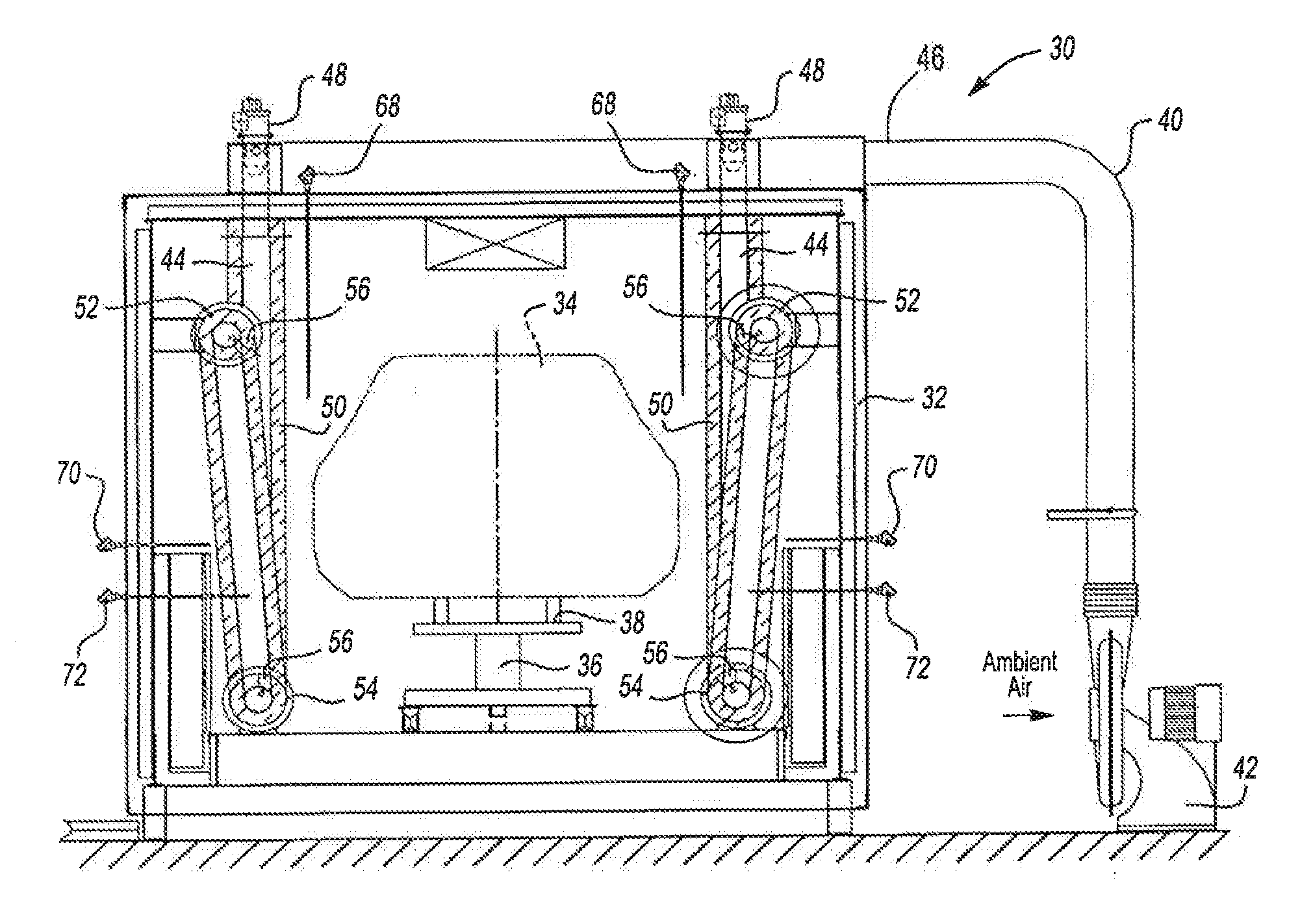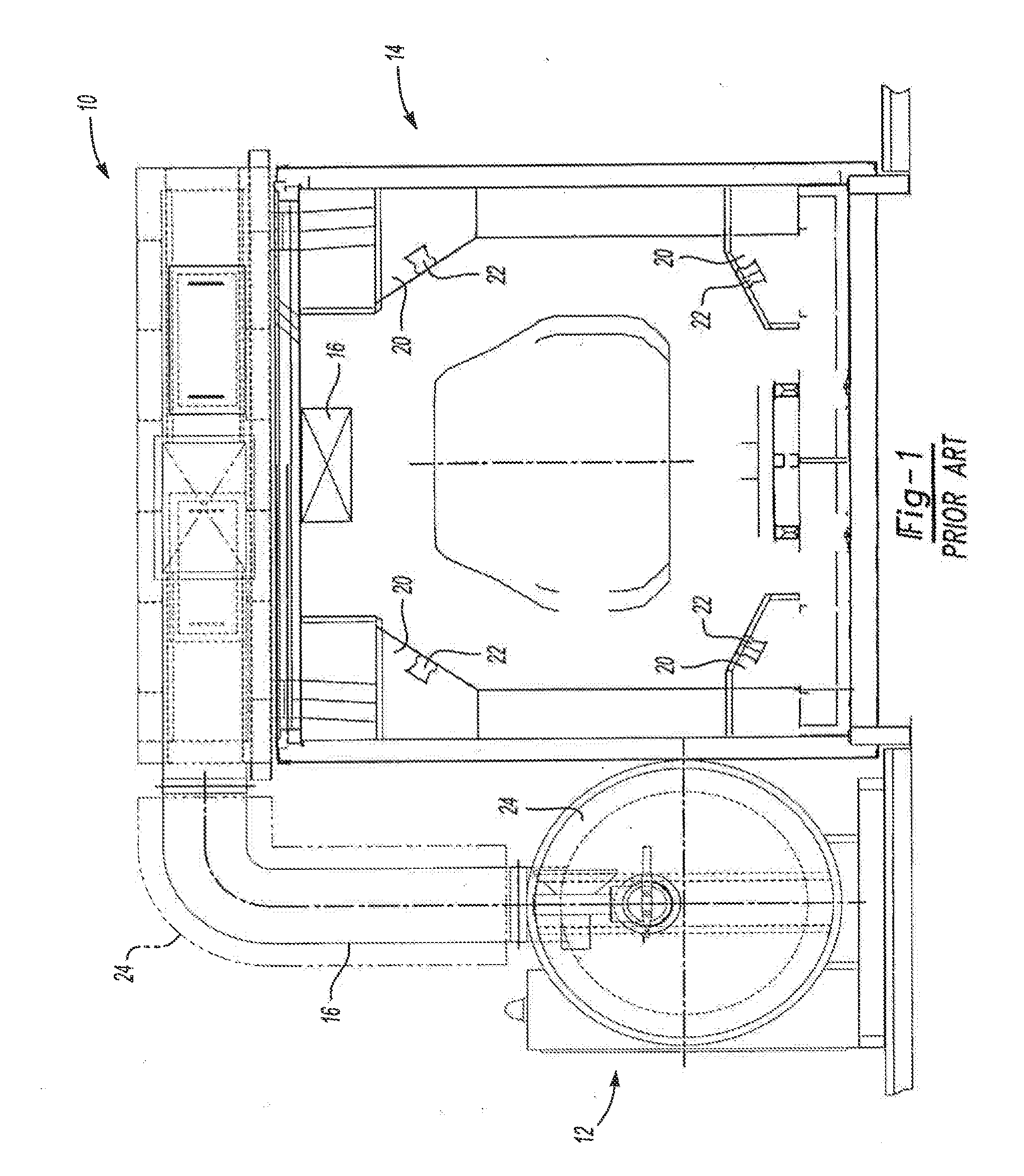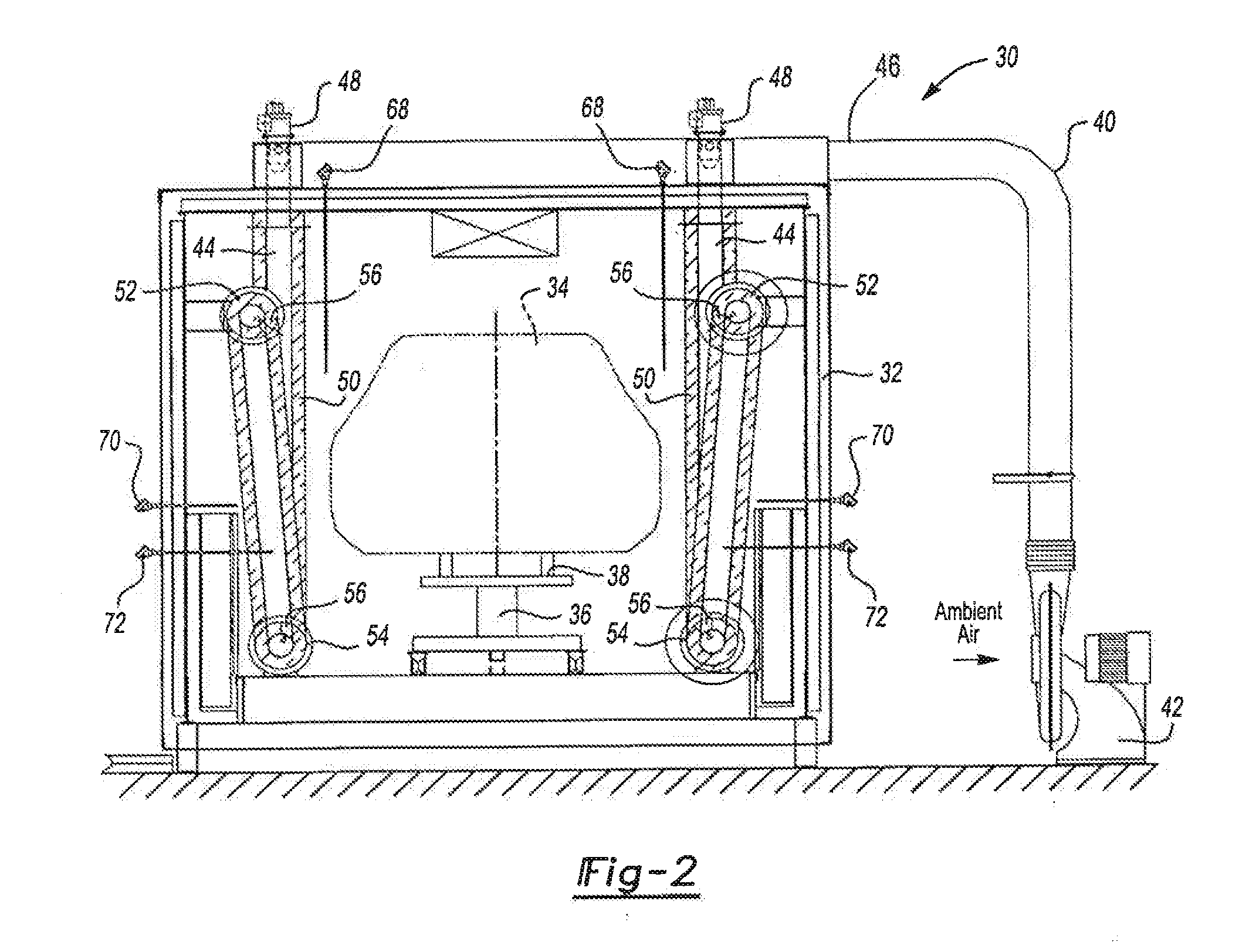Convection combustion oven
a combustion oven and convection technology, applied in the field of invention ovens, can solve the problems of reducing the efficiency of combustion ovens, and overlying robust design, so as to reduce the escape of heat, reduce the air volume, and reduce the effect of energy consumption
- Summary
- Abstract
- Description
- Claims
- Application Information
AI Technical Summary
Benefits of technology
Problems solved by technology
Method used
Image
Examples
Embodiment Construction
[0020]Referring to FIG. 1, an inventive oven assembly is generally shown at 30. The oven assembly includes an oven housing 32 through which an article such as, for example, a vehicle body 34 is conveyed on a transporter 36. The transporter 36, as is known to those of skill in the art, is generally designed as a conveyor that conveys a carrier 38 upon which the vehicle body 34 is secured.
[0021]In a production paint shop, a coating is applied to the vehicle body 34 providing decorative and protective paint finish to the vehicle body 34. Different coatings have different baking or curing requirements that, along with vehicle body type and production volume, dictate the length and thermal requirements of the inventive oven assembly 30. For example, electrodeposition primers typically cure at about 340° F. for about twenty minutes and decorative top coat and clear coats cure at about 285° F. also for about twenty minutes. For simplicity, the explanation of the inventive concepts of the p...
PUM
 Login to View More
Login to View More Abstract
Description
Claims
Application Information
 Login to View More
Login to View More - R&D
- Intellectual Property
- Life Sciences
- Materials
- Tech Scout
- Unparalleled Data Quality
- Higher Quality Content
- 60% Fewer Hallucinations
Browse by: Latest US Patents, China's latest patents, Technical Efficacy Thesaurus, Application Domain, Technology Topic, Popular Technical Reports.
© 2025 PatSnap. All rights reserved.Legal|Privacy policy|Modern Slavery Act Transparency Statement|Sitemap|About US| Contact US: help@patsnap.com



